Magnesium sulfate, or Epsom salt as gardeners commonly refer to it, is very important in the growth of plants. The goal of this guide is to provide a better understanding on how to add Epsom salt to your gardening program effectively. Use of Epsom salts results in better nutrient absorption among crops, faster germination process of seedlings and more chlorophyll production which eventually leads to more healthy plants. Inclusion will cover benefits that come with using Epsom salt, give specific application methods and state the recommended doses for different types of plants. Adhering to these instructions can help gardeners improve their plant care routine leading to beautiful gardens full of life.
Understanding Epsom Salt and Its Benefits
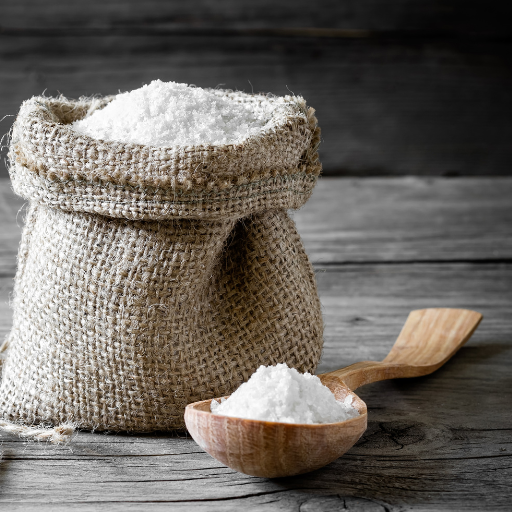
Primarily, Epsom salt is composed of magnesium and sulfur, which are necessary for the growth of plants. Magnesium is an important component in chlorophyll that plants use for photosynthesis to convert light into energy. Sulfur helps produce essential plant proteins and enzymes. Greater nutrient uptake is facilitated by Epsom salt when applied through soil or foliage resulting in healthy root systems and rapid growth. Furthermore, it improves on low levels of magnesium, which may be as a result of pale leaves or retarded growth. The increase in chlorophyll production and enhanced overall health improve efficiency of photosynthesis leading to increased vitality of the plant.
What is the meaning of Epsom Salt?
Epsom salt refers to a mineral compound consisting of magnesium sulfate (MgSO₄·7H₂O). It comes from mineral springs at Epsom in Surrey County in England where it was first discovered. Excluding water molecules attached to the crystals, this substance contains MgSO4 which forms its structure. This compound contains around 10% Mg weight while sulfur constitutes nearly 13%. Magnesium facilitates chlorophyll formation for photosynthesis whereas sulphur plays a role in synthesis amino acids such as vitamins and enzymes critical for survival by other organisms. As such, nutrients’ utilization by plants and their general well-being improve once these elements are supplied through application of Epsom salts.
Major Nutrients: Magnesium and Sulfur
Chlorophylls have been known to constitute about 15-20% Mg within their totality making this element often referred to as an engine for photosynthesis process within plants. Thus, it contributes towards capturing light energy intended at promoting efficient photosynthesis since magnesium has been estimated to account for approximately 15-20% out of total contenting a molecule chlorophyll consists with carbon nitrogen oxygen hydrogen gasses (C55H72N4O5Mg) and carrying out countless more functions (Beachy 2004). Enzymes activation needed for starch and carbohydrate metabolism control that affects crop development and energy depositing in plants is also a function of magnesium. Conversely, sulfur is involved the synthesis of amino acids such as cysteine and methionine which are protein building blocks. It also contributes to the formation of coenzymes and vitamins, like biotin or thiamine necessary for metabolism. In instances where Epsom salt is added to soils with a deficiency in these minerals, increased availability of magnesium and sulfur may correct deficiencies leading to better performance by crops that can be observed through improved growth rates, enhanced disease resistance within other factors improving overall quality of life (Mahajan et al., 2017). There are usually specific recommendations on technical parameters such as application rates; in case of foliar applications, it is proposed to use a 1-2% (10-20 grams per liter) solution of Epsom salts while soil application requires approximately 1-3 pounds per 100 square feet.
Plant Health Benefits
The various ways in which Epsom salt applications can improve plant health are significant. Firstly, higher magnesium availability enhances photosynthesis efficiency hence increasing energy production leading to improved growth rates. Also, energy storage gets better from enzyme activations associated with starch and carbohydrate metabolism that regulates their own growth. For example, sulfur helps synthesize essential amino acids including cysteine and methionine which make up proteins. Besides aiding in the production of coenzymes and vitamins like thiamine or biotin required for metabolic functions (Barnett et al., 2016). For instance when there is an excess supply for this element such as magnesium sulfate MgSO4 then its solubility will be limited because it will crystallize away from solution instead resulting very little amount being available even if enough water still exists (Hussein et al., 2017). For foliar applications, a 10-20 grams’ per liter of water 1-2% solution is appropriate to avoid burning the leaves while supplying enough nutrients. Soil applications respond best when 1-3 pounds are applied every 100 square feet hoping that this would correct nutrient deficiencies, promote strong root development and enhance disease resistance. These technical interventions have been tried out in experiments as well as based on general practices for farming; this way they work perfectly in practice.
Determining the Need for Epsom Salt
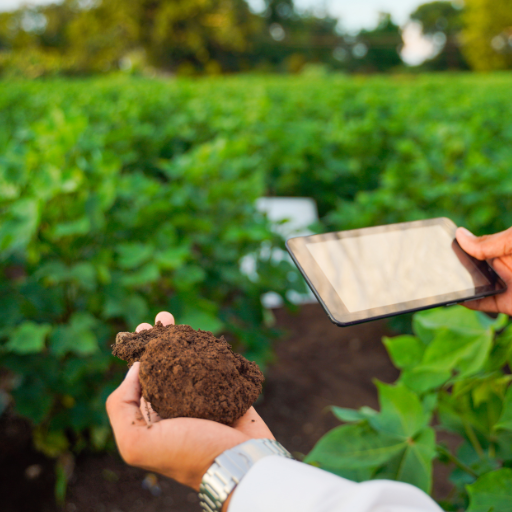
To determine the need for Epsom salts in agriculture or gardening, a soil and plant analysis is necessary. Soil test will measure the levels of magnesium and sulfur showing any deficiencies. Moreover, yellow leaves, stunted growth, poor flowering from visible signs on plants are signs of magnesium deficiency. When a tissue test is done on plant leaves it can show changes in nutrient balance leading to the application of Epsom salt. These diagnostic measures when combined with professional guidelines will enable accurate and effective use of Epsom salt hence improving plant health as well as yield.
Determining Magnesium Deficiency
Magnesium deficiency in plants is usually diagnosed visually and through soil testing. Key visual indicators include interveinal chlorosis; where leaf areas between veins turn yellow but veins themselves remain green. Leaf curling at leaf margins and necrosis, poor root development leading to reduced vigor are other common symptoms. Soil tests reveal soil magnesium contents, which indicate deficiencies normally noted below 50-100 ppm for magnesium. Tissue analysis can further confirm this with optimal range generally between 0.15% – 0.40% (on dry weight basis). These diagnostic methods ensure correct identification of assuredly detected Mg deficiencies and their subsequent cure.
General Symptoms among Plants
Interveinal chlorosis and leaf tip necrosis are the two most common symptoms that characterize Mg deficiency in plants.Leaf margins may exhibit necrosis when this happens.Typical examples include upward curling along with death of tissues around these leaves.The upturned leaves have no normal root system thus they cannot produce properly thus slowing down growth rates.Most notably among them all are widely growing crops such as tomatoes, sweet peppers, roses.
Technically speaking diagnosis on lack of magnesium involves checking whether optimum levels exist via both soil and tissue analyses.For example, soils should be having more than 50-100 parts per million (ppm) of Mg2+. Healthy leaf should contain approximately 0.15 to 0.40% magnesium (dry leaf weight). These parameters are confirmed by reliable soil and tissue analysis methods that enable accurate corrective techniques and facilitate healthy plants.
Methods of Soil Testing
Several standardized approaches can be used to test magnesium in the soil to determine its concentration and availability for plant uptake. The first method is the Mehlich-3 extraction method, which can extract a wide range of nutrients, including Mg, from a given soil sample. Here, the soil sample is mixed with an acidic solution, filtered, and analyzed using an ICP spectrometer to determine the magnesium concentration.
Secondly, ammonium acetate extraction method is another common technique useful when assessing exchangeable cations if employed. This process involves treating the soil sample with a neutral ammonium acetate solution that displaces magnesium ions measured by atomic absorption or ICP spectrometry.
Lastly, the Morgan extraction method may also be employed, especially in areas where acid soils predominate. In this case, a buffered ammonium acetate solution at pH 4.8 extracts magnesium from soil samples, which is then quantified by atomic absorption or ICP spectrometry.
These methods allow accurate and repeatable measurements of soil Mg levels that inform targeted management of soil fertility interventions for sustainable crop production.
Preparing Epsom Salt Solutions
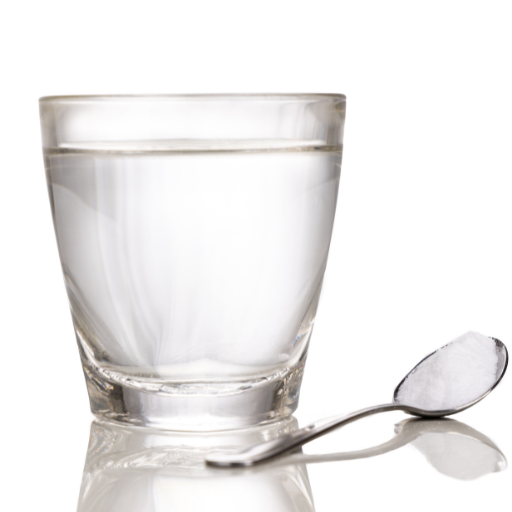
To achieve the desired magnesium addition, precise instructions must be adhered to when making Epsom salt solutions for agricultural purposes. In this case, a foliar feeding solution concentration of 1 tablespoon of Epsom salt per gallon is commonly recommended. This strength guarantees an adequate supply of magnesium without causing phytotoxicity. For moderate supplementation, a rate of 1 to 2 pounds of Epsom salt per one hundred square feet can work well for soil application.
Dissolve thoroughly and uniformly by first dissolving the Epsom salt in a small amount of water then mixing it into the larger volume. To ensure minimal evaporation and leaf burn risk, apply the solution during early morning or late afternoon to maximize absorption. Soil and tissue testing results may lead to repeated applications until magnesium deficiency is solved accurately.
Measuring the Right Dosage
The correct dosage of Epsom Salt for agricultural use depends on specific crop requirements as well as extent of Mg shortage in such crops. Precise diagnosis regarding magnesium levels requires a combination of both tissue tests and soil samples. Application through foliage should consist spraying evenly over leaf surface,dissolved in a standard quantity (one tablespoon) per gallon which provides enough magnesium from uptake by photosynthetic leaves while on land it involves uniform spreading of 1-2 lbs/100 sqft that ensures moderate supplemental enrichment with Mg within field soils.Watchful monitoring via next soil and tissue analyses will keep up-to-date dosing levels by adjusting them accordingly.
Mixing Epsom Salt with Water
When making solutions with water for farming purposes, you must have some guidelines on how to get good results alternatively ensure that your solution works as intended after pouring out excess unwanted materials in order to make high quality epsom salts . First dissolve the Epsom salt in warm water so its solubility increases due to enhanced dissolution at higher temperatures. Continuously stir until the Epsom salt is completely dissolved. Then, dilute the concentrated solution with water gradually while stirring constantly to prevent lumps from forming. Use a sprayer for the foliar application of the solution and mix it into soil for future use. This can be avoided by regular stirring which prevents it from settling at the bottom.
Creating Foliar Sprays and Soil Drenches
To ensure that plants remain healthy, there are specific guidelines, which when followed result in effective foliar sprays as well as soil drenches. One tablespoon of Epsom salt per gallon of water is suggested when preparing foliar sprays. This concentration ensures that enough magnesium gets into the plant through leaf surfaces taking up this nutrient quickly. Apply as a fine mist using a misting nozzle so that both upper and lower leaf sides get wetted uniformly during spraying.
Good ratios range between 1-2 lbs/100 sqft→ for soil drenching: magnesium will be accessible to root system only if one uses around 1-2lbs/100 sq ft whenever applying; otherwise, poor growth may result. Firstly dissolve it properly into warm water before doing anything else to increase its solubility rates (G.), and remove any visible particles (suspended matter). Immediately after application, irrigation should done copiously so that more Mg could go down deep in to profile of soils.
Regularly checking magnesium levels in soil and tissues following its application is important. These test results may necessitate changes in the frequency or concentration to maintain a continuous supply of magnesium, thus avoiding over- or under-supplying it. By so doing, proper fertilizer nutrition will be ensured, promoting significant crop growth.
Application Methods
To apply Epsom salt correctly, start by making the solution as indicated on the guidelines. For foliar applications, ensure that you have mixed your solution well and loaded it in a fine mist sprayer. Cover the foliage with uniform mist, concentrating on both upper and lower leaf surfaces for maximum take-up. Preferably do this early in the morning or late afternoon to avert leaf burn and enhance optimal absorptions.
Calculate how much Epsom salt is needed based on the size of your garden so that it can be dissolved in warm water before drenching. Spread this evenly over the soil to sufficiently cover the root zone. Water the area thoroughly after applying to improve magnesium penetration into the soil, allowing plant roots access.
Always monitor magnesium levels in soils and plant tissues. Employ soil test kits and plant tissue analyses to measure magnesium concentration at different growth stages, then adjust future rates of application based on the outcome of these exercises. The aim of systematically doing this is to maintain a balanced availability of magnesium, thus promoting healthy and vigorous plant growth.
Direct Soil Application
When directly applied into soil, Epsom salt must be used precisely while observing some specific agronomical parameters for highest efficiency possible. Depending on their initial levels of magnesium contents and which plant species are involved; there could be varying doses recommended. Among topmost horticultural sources’ collective opinions, one commonly espoused guide says using about 1-2 tablespoons of Epsom salt per gallon water is enough for most general purposes.
This should be distributed evenly at the base towards root zone targeting roots specifically while avoiding other parts above ground soils also contain remnants from non-dissolved Epsom particles that pose risks to harmfulness when poorly mixed up with water before use. Rates as well as frequency should be decided upon according to periodic analysis involving soil testing plus plant tissue analysis avoid excesses in Mg which may lead to other essential nutrient imbalances such as Ca and K.
From the technical standpoint, magnesium sulfate (Epsom salt) dissociates into magnesium (Mg²⁺) and sulfate (SO₄²⁻) ions in water, making them available for plant uptake. The proper soil pH to apply should be between 6.0-7.5 because this range optimizes nutrient availability including that of Mg.The soil health is a function of these qualitative and quantitative data adjustments which are conducted from time to time in order to promote excellent crop yields.
Foliar Spray Techniques
When done appropriately, foliar application of Epsom serves as an efficient way of correcting magnesium deficits and promoting robust plants. Dissolve Epsom salts at a rate of about 1 tablespoon per gallon of water for spraying solution onto foliage; to ensure rapid absorption through leaves by magnesium.
- Time of Application: Early morning or late evening sprays are recommended to reduce evaporation losses and hence minimize the risk leaf scorching.
- Solution Concentration: To avoid over fertilization, which can lead to leaf burn and other phytotoxic effects, it is important to maintain a one-tbsp-per-gallon ratio while mixing with water.
- Coverage: In order to have a good uniform and entire cover, it is of great importance. To this end, you need to use the finest mist setting on your sprayer to coat both sides of the leaves.
- Frequency: If extreme shortages are considered, the applications could be repeated every two weeks. Continuous monitoring of plant health and tissue analysis at intervals can improve the spraying regimen for best results.
- Environmental Conditions: Ideally, the best environment should have temperatures within 65°F and 85°F as well as relative humidity that discourages fast drying up of spray on leaf surfaces.
Following these guidelines, foliar application of Epsom salt can be an excellent approach for enhancing plant vigor and correcting magnesium deficiencies precisely and efficiently. Therefore, consistent evaluation, along with real-time data and plant responses, must be done to maintain good crop health and productivity levels.
Incorporating into Regular Watering
It requires caution to include Epsom salt in normal watering routines of plants since there are potential negative impacts that can be caused. Here are the guidelines based on a review of the top sources:
- Dosage: For standard applications, one tablespoonful of Epsom salt should be dissolved in 1 gallon of water. This concentration is okay for many different types of crops such as vegetables, flowers and indoor plants.
- Frequency: The Epsom salt solution should be used once a month during growing seasons. For plants showing signs of magnesium deficiency, more frequent applications (every two weeks) might help until the deficiency is corrected.
- Application Method: Directly apply the Epsom salt solution to soil around plant base. Ensure even distribution and prevent an excessive application which may lead to high salt levels in soils.
- Environmental Conditions: Moisture conditions before application enhance absorption through roots, achieving optimal results. Do not apply under drought or water stress conditions.
- Compatibility with Other Fertilizers: Use it together with other fertilizers but do not replace balanced fertilisation practices. It specifically supplements magnesium and must therefore be integrated into a comprehensive fertilization plan.
By practicing these technical parameters, Epsom salt will easily become part of your routine watering process without any negative impacts on your plants’ healths and nutrient availability such as regular assessment and soil testing to avoid over-application and tailor according to specific plant needs and environmental factors.
Best Practices for Different Plant Types
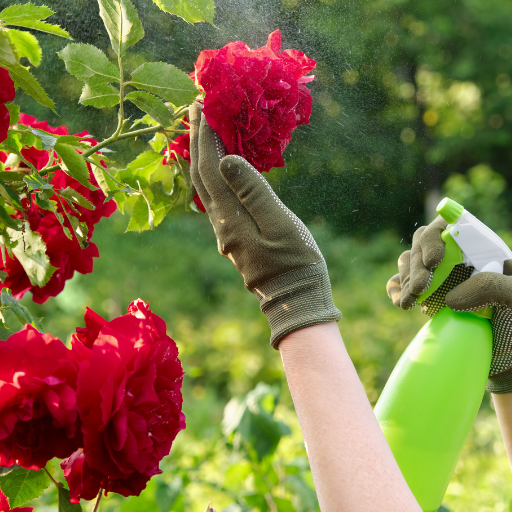
Vegetables like tomatoes and peppers benefit significantly from Epsom salt applications due to their high magnesium requirements. For these plants, a foliar spray of 1 tablespoon of Epsom salt dissolved in 1 gallon of water can be applied monthly to enhance fruit production and improve flavor. Roses, which also prefer magnesium-rich soil, can receive a similar foliar spray during their growing season to promote vigorous blooming and lush foliage. Houseplants generally require less frequent applications; a quarterly watering with an Epsom salt solution of 2 tablespoons per gallon is typically sufficient to keep them healthy. Regular monitoring and adjustment based on plant response are crucial to mitigate the risk of over-application.
Tomatoes and Peppers: Vegetables
Epsom salt application for tomatoes and peppers could also result in higher yields as well as overall plant vigor by reducing magnesium deficiency symptoms caused by low soil levels. Expert advice recommends dissolving one tablespoon in one gallon applied after every thirty days for this practice. Optimal magnesium levels are crucial for chlorophyll production and nutrient uptake, supporting robust plant growth and increased yields. In intensively cultivated fields especially those that have very low content of magnesium, it may be recommended that comprehensive sprays at fortnightly intervals consisting of one teaspoon Epsom salts per each quart (0.95 l) of water should be employed as needed. This method ensures immediately available magnesium while addressing any visible deficiency signs more rapidly than other ways might do. Key parameters include soil pH –maintained between 6-8—monitoring and periodic adjustment according to the plant’s needs.
Roses And Azaleas: Flowering Plants
Magnesium needs in roses make them highly receptive towards Epsom salts because this enhances flower blooming ability besides keeping healthy leaves too greenish color shade indicative vitality. A monthly application regimen has been suggested by practiced horticulturists during the growth period with one gallon of solution consisting of a tablespoon Epsom salt. This program addresses the plant’s magnesium necessity that helps in the growth of healthy plants and abundant blooming. They must conduct a soil test that will allow them decide on the right pH level between 4.5 and 6.0 before they apply for that matter. Azaleas, whose flower quality and general vitality also benefit from higher magnesium levels, require a slightly different approach however. When active, spray twice per fortnight using one teaspoonful of Epsom salt per gallon of water as foliar nutrient.
Lawns And Houseplants: Greenery
The use of Epsom salt in lawns can improve their greenness by improving chlorophyll production as well as enabling better nutrient absorption through its magnesium and sulphate content to encourage lush growth of turf grasses. Applying Epsom salt at a rate of 1.5 pounds per 625 square feet is recommended. You could dissolve it in water and then use a sprayer or spread the granules directly on the lawn followed by thorough watering; either way you will achieve this coverage amount over your lawn quickly and easily just as if you were applying fertilizer only that these grains are not fertilizers. To ensure efficient uptake of magnesium, it is good to have soil pH slightly acidic to neutral (6-7).
The use of Epsom salt on houseplants can make sure that leaves of the plants are always bright and healthy. Also, the mixture is made up of two table spoons of Epsom salt and a gallon of water which is usually used in watering the plants periodically every month. This produces a source of magnesium and sulphur that can be easily absorbed in order to form strong cell walls and enzymes. Moreover, one should check pH values for soil in houseplant because it should be between 5.5-6.5 to enable nutrients uptake and proper overall plant health. The continuous observation for signs such as leaf coloration and rate of growth provides an opportunity to adjust accordingly whenever there is need for applying Epsom salt.
Monitoring and Adjusting Usage
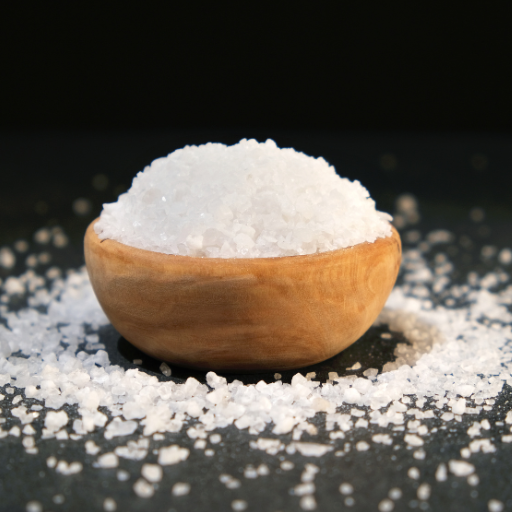
To monitor and control the use of Epsom salt for plant health, it is necessary to evaluate soil test results and how plants are responding continually. Soil testing should be geared towards pH, magnesium contents as well as sulfur levels that should stay within the optimal ranges cited earlier. A look at plants itself can provide additional clues, such as chlorosis (yellowing leaves) which may indicate magnesium deficiency curable through Epsom salt application. On the other hand, leaf burn or retarded growth also shows symptoms of magnesium toxicity which implies either lowering or ceasing the application of Epsom salt. These adjustments need to be made gradually from the lowest effective dose moving on to higher doses only if there is a proof based on plant health metrics and soil test data that more magnesium and sulfur are required. This close supervision enables us to maintain a balanced nutrient profile that is necessary for achieving healthy plant development.
Plant Response Monitoring
Plant response monitoring calls for an organized approach in order to accurately assess how plants are reacting towards Epsom salts. It is important to watch out for some signs in particular leaf color, rate of growth and flowering patterns. The commonest sign of a lack of magnesium in most cases correctable by using Epsom salt is chlorosis characterized by yellowing leaves. Good amounts of magnesium will promote lush green foliage due to enhanced chlorophyll production under optimum conditions.
- Soil Magnesium Content: Desired levels for magnesium in soil range between 40 ppm and 60 ppm.
- Soil pH Levels: Maintain a pH level between 5.5-6.5 so as not lock out nutrients.
- Application Dosage: Dissolving 1-2 tablespoons of Epsom salt per gallon of water has been suggested as suitable recommendations for monthly use
Such factors help create controlled environments where variables are carefully managed ensuring maximal returns from Epsom salt without any negative effects such as toxicity occurring. It means that by conducting regular tests on the soil and carefully observing how plants respond, one can make small adjustments that will lead to the best possible growing conditions.
Dosage and Frequency Adjustment
The adjustment of the Epsom salt application dosage and frequency is critical to achieving the desired results without causing negative effects. It is recommended in most cases to start with a lower dose as one observes plant response based on information from reliable sources before any changes are made. The average amount that is normally used is 1-2 tablespoons of Epsom salt per gallon of water which may vary depending on soil tests and plant health observations.
If symptoms persist, a gradual increase in dosage might be necessary, provided that it does not go beyond two tablespoonfuls per gallon so as not to cause toxicity. Frequency-wise, monthly applications usually work for most plants, although if there are heavy feeders or those showing signs of severe deficiency, biweekly applications could be more appropriate until improvement sets in.
- Soil Magnesium Levels: With a desirable ppm range between 40-60 ppm.
- Soil pH: A nutrient availability goal requires maintaining a pH range between 5.5 and 6.5.
- Leaf Tissue Analysis: Regular analysis of magnesium levels within plant tissue can provide precise feedback about whether adjustments are effective.
Beware of Excess Use and Likely Problems
Epsom salt overuse can result in an imbalance of soil nutrients, which may be more detrimental than beneficial to plants. The excess magnesium might interfere with the absorption of other essential elements, such as potassium or calcium, leading to their deficiency. To this end, regular soil and plant tissue testing for nutrient monitoring and an adjustment of Epsom salts is needed.
- Soil EC (Electrical Conductivity): High values indicate excessive salinity, which could hinder plant growth and water uptake. Keep EC levels less than 1.2 dS/m.
- Calcium/Magnesium Ratio: A desirable Ca:Mg ratio in the soil is about 3:1. Greater than this range results in retarded growth and nutrient lockout.
- Leaf Chlorosis: Watch out for chlorosis (yellowing leaves), as it may indicate nutrient toxicity/deficiency due to imbalanced Epsom salt usage.
Frequently Asked Questions (FAQs)
Q: How do I use Epsom salt for plants?
A: To use Epsom salt on plants, dissolve 1 tablespoon of Epsom salt in a gallon of water. Apply the solution to the base of the plants every 2-4 weeks, ensuring the soil absorbs it thoroughly.
Q: Can I use Epsom salt in my garden?
A: Yes, you can use Epsom salt in the garden. It provides magnesium and sulfur, which are essential nutrients that can help plants grow bushier and produce more flowers and fruit.
Q: How much Epsom salt should I use for my tomato plants?
A: For tomato plants, use 1 tablespoon of Epsom salt per foot of plant height. Applying Epsom salt every few weeks can help prevent blossom end rot and promote better growth.
Q: Can Epsom salt help with soil pH adjustment?
A: Epsom salt does not significantly alter soil pH. Its primary benefit for plants is providing magnesium and sulfur rather than influencing the pH level of the soil.
Q: How often should I apply Epsom salt to my garden plants?
A: You should apply Epsom salt to your garden plants about once a month. Overuse can lead to a buildup of magnesium in the soil, which might harm plant growth.
Q: Is Epsom salt good for potted plants?
A: Yes, Epsom salt can be beneficial for potted plants. Use a diluted solution, adding about 1 teaspoon of Epsom salt to every gallon of water, and apply it to the soil once a month.
Q: What are the benefits of using Epsom salt in gardening?
A: Epsom salt in gardening can help by providing magnesium, which is essential for chlorophyll production, and sulfur, which aids in overall plant health. These nutrients can improve flower blooming and enhance the green color of foliage.
Q: Can Epsom salt prevent blossom end rot in tomato plants?
A: Epsom salt can help prevent blossom end rot in tomato plants by providing a readily available source of magnesium. However, it should be used in conjunction with proper watering and calcium management for best results.
Q: Are there plants that don’t like Epsom salt?
A: Some plants, especially those that do not have a high magnesium requirement, may not benefit from Epsom salt. Overuse in such cases could lead to nutrient imbalances. It is best to test soil and plant responses before widespread application.






